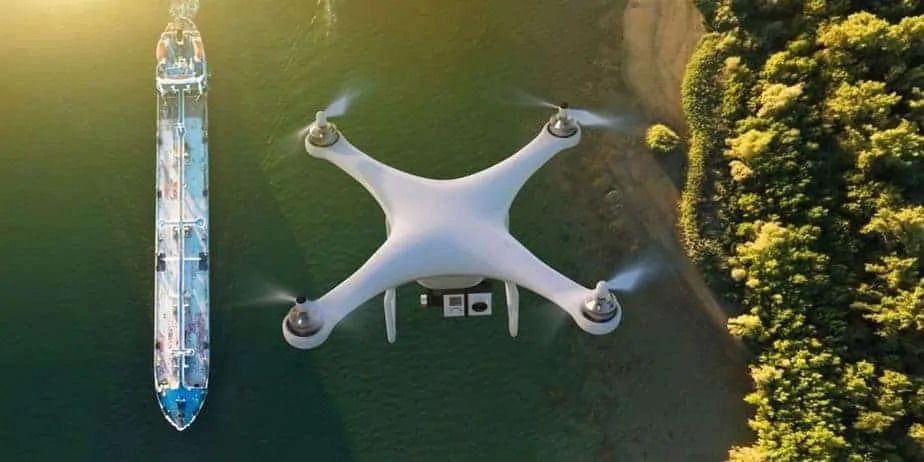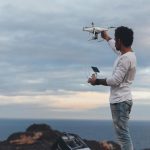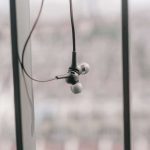Always remember that you are a pilot first and a photographer second. Your primary responsibility as a commercial UAV pilot is to safely operate and land your drone without incident.
The key word here is “incident,” since that is what triggers an FAA investigation which, best case, results in a major loss of your time and money. If there is property damage, major negative press exposure, or injuries, your penance could be substantial and possibly life-changing.
The point I am making is that you must be consistent in your ground processes, safety procedures, and aerial discipline to conduct every sortie (for the uninitiated, that’s military aviator lingo for takeout-mission-landing), in a professional manner without any close calls, risky maneuvers or any negative appearance to the general public. The UAV industry has been hammered enough already by those who irresponsibly fly their drones into fragile or restricted environments, generating bad press for fellow pilots.
1. Configure Your Shaded Flight Deck: Prep Work
To get started flying your commercial Phantom right out of the box you need to pause and do some prep work first. As I mentioned in the initial investments blog posts, the shaded flight deck is a must. Since nearly all your flying sessions will be during the day with sunlight reflecting off your iPad, the shade is critical. Keeping your hands free to manipulate the UAV is important along with being able to utilize your phone for other technical chores tied to the aerial project.
All these free hand requirements are made possible by the shaded flight deck hung from your neck. You can use the following Homemade Shade Flight Deck Instructions to construct your own shaded flight deck before even beginning your flight training. This may seem like a silly homemade contraption, but it will be a necessity out in the field when you are flying hours per day.
2. Preparing for Takeoff
Since this blog post is not a beginners’ guide to flying drones, I will assume you have already read the Phantom manual and know the preparations, safety procedures, takeoff processes, and so on. What we are going to focus on is some processes to assure the safety of your drone and the efficiency of the mission. I never take off from the bare ground.
There is too much dirt, loose grass, moisture, and other stuff that may hit my UAV on takeoff. It is for this reason I always use my drone case as a launching pad for my Phantoms. Since the prop wash stirs such a high volume of muck and other junk that can dirty up the lens, compromise the gimbal, or nick the propellers, I want to elevate the bird above the crud and give it a clean and level environment from which to lift off.
Some aerial project LZs will mandate such take-off techniques since the environment could be nothing but two-foot-high grass. There have been other times where I placed my bird on top of the roof of my truck so that it has a better chance to not hit bushes and trees on the way up and out.
3. Landing
a quadcopter, especially the Phantom series, can be difficult because of the narrow landing rails. Tip-overs resulting in prop hits are easy due to wind gusts and sloppy piloting. Any violent motion of the UAV risks the camera, gimbal, props, and similar fragile components. I have already strongly recommended taking off from a manmade platform above the dirt, sand, and grass to protect the camera and moving parts. Landing a quadcopter can be just as harrowing as takeoff.
Due to the dangerous, high velocity spinning propellers on a quadcopter, I cannot recommend catching the Phantom in the air as a method of landing. For liability’s sake, I recommend that you do not. It is much safer to land it on a hard, flat, clean, and dry surface such as a driveway, parking lot, or large piece of plywood. Let me be clear I do NOT recommend landing the Phantom by catching the landing gear and shutting down the engines to prevent the bird from getting dirty or experiencing a turnover while landing on the bare ground.
3.1 Emergency landings
Just like in a real plane, the pilot in command (you) needs always to be scouting for an emergency LZ in case of rapid power loss, birds hit, prop loss or engine failure. This is one of the reasons to keep the UAV in the line of sight; you can quickly land it away from people, water, trees, and roadways.
Before I arrive on the site of the flight, I map out possible alternate and emergency LZs with Google Earth the night before. Upon arrival at the site, I will eyeball those pre-mapped LZs to make sure they are available and drone-lending friend-ly, without risk to humans and with low risk to the Phantom. If a low-flying airplane or helicopter enters your flight area, descend immediately as long as it will help avoid a collision. When you see a hawk or other large bird getting aggressive with your UAV, fly the opposite way and lower your altitude.
Keep an eye out for fast-developing rainstorms, or cold fronts with gusty winds sneaking up on you and the airborne UAV. Be ready to quickly get your drone out of the air and on the safe, clean ground when risk appears.
In the event of rapid power loss, fly directly to your nearest pre-mapped emergency LZs. Focus on heading rather than trying to lower the bird since that will happen soon enough. You may establish enough forward momentum to make it to a non-disastrous area that is not inhabited, wet, or heavily treed.
4. Learn Smooth Aerial Maneuvers
Once you are aloft, get used to flying in the aerial photography altitude range of 50 to 200 feet Above Ground Level (AGL). The minimum altitude will be at least 25 feet above the tallest structure in the area. If the highest things in my flight area are 50-foot trees, I am going to keep my Phantom at least 75 feet high. The same minimum vertical separation goes for buildings, power lines, and all types of towers. (This is the current rule for 333 exemption pilots.)
After you have established a minimum safe altitude, you can start flying the bird around and get used to the sensitivity of the controls. The key to good photography is small and smooth flight manipulations, so get into the consistent stick control with that in mind. Try to avoid harsh turns, abrupt stops, and quick changes in altitude.
Control Signal Lost Become familiar with what the bird looks like 200 feet away at 100 feet high then how it nearly disappears at 500 feet away and 300 feet high. Understand the radar simulator in the lower left corner of the DJI Vision app and attempt to fly it away from you, towards you, and then parallel to your position. Discover how that battery consumption varies with how hard you work the UAV, and how fast 10–12 minutes goes when you are flying around. See if you can learn to smoothly fly in a rotating pattern around your position, keeping your image as the center of the FPV frame while recording. Then train on doing clean, stationary rotations to get a 180-degree scan of the area. Practice going up in a slightly accelerated mode and then in a consistent climb mode.
Try all these different maneuvers over and over until you have confidence in your piloting skills. This may take 10 to 20 or more sorties over several days, depending on how many batteries you have and the time it takes to recharge them between flights.
The goal is to get your processes down to where you can configure your bird, get it cleanly up in the air, perform the aerial mission you need to gather the photography required, then return safely to the ground with no incidents. Practice is the only way to acquire this skill set.
5. Test “Return to Home” via Distance and RC Failure
The scariest test you will do when you first fly your Phantom will be testing the “Return Home” feature. This step is highly recommended since you will be using it either by choice, loss of communications event or by controller failure. Either way, you need to test that it works and see how it works, and have confidence it will work when you need it. Before getting started, make sure you are doing the following tests on full batteries, you have calibrated the compass (see your manual for that process), and the “home point” is correctly set to your current position.
Then fly the Phantom about 100 feet up and 500 feet away with no obstructions around, preferably in an empty field. Test one will be to simply turn off the Phantom’s remote controller. Within ten seconds you will see a communications loss banner on your iPad DJI Vision app and the “Returning Home” notification.
Coming Home The avionic display should show the bird flying back to you, and it should come back to your home point and begin its landing procedure. After powering the controller back up, you can toggle the top right switch down and back up which will return control if you want to take over the flight and abort the landing.
Test two (again, on a full battery) will be to send the Phantom up to at least 200 feet and start flying forward over a safe area. As long as you have a good line of sight, keep going until the distance gets so far the communications link drops and the “Return Home” process starts. Note how far it got just before it lost signal.
I have been able to get my Phantom 2 Vision Plus to just over 3,000 feet horizontal distance before it lost communications and returned home. Verifying that the “Return Home” function will work in these controlled conditions is important so you can have the confidence in knowing your UAV will return from any treacherous flying environments during your real-world aerial photography missions. These more advanced procedures and flying skills will be necessary to utilize your UAV as a flying camera in a professional and safe manner.








